There are 11 major organ systems in the human body.
They are the integumentary, skeletal, muscular, nervous, endocrine, cardiovascular, lymphatic, respiratory, digestive, urinary, and reproductive systems.
Anatomy and physiology knowledge are important to both ICD-10-CM and PCS coding, but the logic is applied differently for coding procedures and coding the diagnoses.
Anatomy of the human body is an essential skill set for medical coders. Medical coders should be familiar with every body system. The elements to understand are how everything works together as well as how they are related to each other.
Body system, root operation, body part, approach, device and sometimes the qualifier requires that the coder be knowledgeable about anatomy, physiology, and disease pathology.
Here are listed the major body systems you’ll likely encounter on the job (and in your CPT books in the section devoted to that system).
In some reference books, the male and female genital systems are combined with the urinary system and referred to as the genito-urinary system.
How Many Body Systems Are There?
The body has many different systems that the medical coder should become familiar with. These different body systems include the skeletal, nervous, muscular, respiratory, endocrine, immune, cardiovascular/circulatory, urinary, integumentary, reproductive, and digestive systems.
Body System #1: Skeletal System
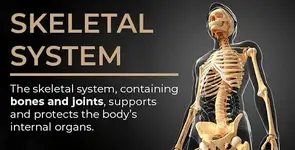
The skeletal system is the framework of the body that is held together by tendons, ligaments, and cartilage. The skeleton helps humans move and is involved in the production of blood cells and the storage of calcium.
Diseases and Disorders of the Skeletal System
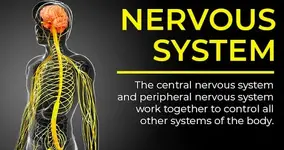
The nervous system is a network of nerve cells and fibers that transmit nerve impulses throughout the body. This body system is made up of the brain, spinal cord, and nerves. Nerves are cylindrical bundles of fibers that start in the brain and central spinal cord and branch out to different part of the body.
Diseases and Disorders of the Nervous System
Body System #3: Muscular System
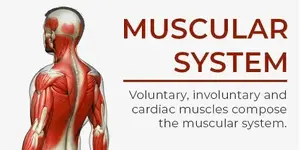
The muscular system aids in movement, blood flow, and other bodily functions. The muscular system is made of three different types of muscles. (1) Skeletal muscles are connected to bone and aid in voluntary movement. (2) Smooth muscles are found inside organs and help to move substances through organs. (3) Cardiac muscles are found in the heart and help pump blood. This body system consists of the entire skeleton, which is made up of bones attached to other bones with joints and skeletal muscles attached to the skeleton with tendons and ligaments.
Fracture repair codes, casting, relocation of dislocated joints, and other musculoskeletal repair codes are the procedure codes related to the musculoskeletal system.
Diseases and Disorders of the Muscular System
Body System #4: Respiratory System
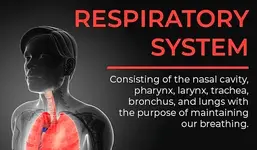
The respiratory system brings in oxygen and expels carbon dioxide. This system is made up of the airway, the lungs, and the different muscles of respiration. The respiratory system is made up of the nose and nasal cavity, pharynx, larynx, trachea, bronchi, and lungs. Removals of foreign body from the nose to surgical closure of a tracheotomy are procedure codes related to the respiratory system.
Diseases and Disorders of the Respiratory System
Body System #5: Endocrine System
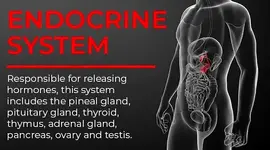
The endocrine system is a collection of glands that secrete hormones into the circulatory system to be delivered to the body’s vital organs. This system regulates metabolism, growth and development, tissue function, sexual function, reproduction, sleep, and mood.
Diseases and Disorders of the Endocrine System
They are the integumentary, skeletal, muscular, nervous, endocrine, cardiovascular, lymphatic, respiratory, digestive, urinary, and reproductive systems.
Anatomy and physiology knowledge are important to both ICD-10-CM and PCS coding, but the logic is applied differently for coding procedures and coding the diagnoses.
Anatomy of the human body is an essential skill set for medical coders. Medical coders should be familiar with every body system. The elements to understand are how everything works together as well as how they are related to each other.
Body system, root operation, body part, approach, device and sometimes the qualifier requires that the coder be knowledgeable about anatomy, physiology, and disease pathology.
Here are listed the major body systems you’ll likely encounter on the job (and in your CPT books in the section devoted to that system).
| System | Organs Involved |
| Cardiovascular | Blood vessels, heart, and lymph system |
| Digestive | Structures inside the mouth, stomach, and colon, all the way down to the rectum |
| Endocrine | Thyroid, parathyroid, and adrenal glands |
| Eye and ocular adnexa and auditory | Eyes and ears |
| Female genital | Ovaries, fallopian tubes, uterus, and external genitalia |
| Integumentary | Skin and nails |
| Male genital | Penis, prostate, testes |
| Musculoskeletal | Connective tissue, muscles, ligaments, and bones |
| Nervous | Brain, spinal cord, and nerves |
| Respiratory | Airway and lungs |
| Urinary | Kidneys, bladder, ureters, and urethra |
In some reference books, the male and female genital systems are combined with the urinary system and referred to as the genito-urinary system.
How Many Body Systems Are There?
The body has many different systems that the medical coder should become familiar with. These different body systems include the skeletal, nervous, muscular, respiratory, endocrine, immune, cardiovascular/circulatory, urinary, integumentary, reproductive, and digestive systems.
Body System #1: Skeletal System

The skeletal system is the framework of the body that is held together by tendons, ligaments, and cartilage. The skeleton helps humans move and is involved in the production of blood cells and the storage of calcium.
Diseases and Disorders of the Skeletal System
- Osteoporosis – This disorder is prevalent in the elderly. The bone loses calcium and becomes thinner, resulting in the loss of bone tissue.

The nervous system is a network of nerve cells and fibers that transmit nerve impulses throughout the body. This body system is made up of the brain, spinal cord, and nerves. Nerves are cylindrical bundles of fibers that start in the brain and central spinal cord and branch out to different part of the body.
Diseases and Disorders of the Nervous System
- Epilepsy – This disorder results in abnormal electrical discharges from brain cells causing seizures.
- Parkinson’s Disease – Parkinson’s is a progressive nerve disease that affects movement.
- Multiple Sclerosis (MS) – With MS, the protective lining of the nerves is attacked by the body’s immune system.
- Amyotrophic Lateral Sclerosis (ALS) – Also known as Lou Gehrig’s Disease, ALS is a motor neuron disease which weakens the muscles and progressively affects physical function.
- Huntington’s Disease – This is an inherited condition that causes the nerve cells in the brain to degenerate.
- Alzheimer’s Disease – This disorder impacts mental functions and memory.
Body System #3: Muscular System

The muscular system aids in movement, blood flow, and other bodily functions. The muscular system is made of three different types of muscles. (1) Skeletal muscles are connected to bone and aid in voluntary movement. (2) Smooth muscles are found inside organs and help to move substances through organs. (3) Cardiac muscles are found in the heart and help pump blood. This body system consists of the entire skeleton, which is made up of bones attached to other bones with joints and skeletal muscles attached to the skeleton with tendons and ligaments.
Fracture repair codes, casting, relocation of dislocated joints, and other musculoskeletal repair codes are the procedure codes related to the musculoskeletal system.
Diseases and Disorders of the Muscular System
- Polymyositis – Polymyositis results in inflammation and progressive weakening of the skeletal muscles.
Body System #4: Respiratory System

The respiratory system brings in oxygen and expels carbon dioxide. This system is made up of the airway, the lungs, and the different muscles of respiration. The respiratory system is made up of the nose and nasal cavity, pharynx, larynx, trachea, bronchi, and lungs. Removals of foreign body from the nose to surgical closure of a tracheotomy are procedure codes related to the respiratory system.
Diseases and Disorders of the Respiratory System
- Influenza – The flu is a contagious respiratory illness caused by influenza viruses that infect the nose, throat, or lungs.
- Pneumonia – Pneumonia is an infection of the lungs.
- Asthma – This results in constriction of the lung’s airways causing coughing, wheezing, chest tightness, or shortness of breath.
- Chronic Obstructive Pulmonary Disease (COPD) – COPD is a progressive disease that makes it increasingly difficult for a person to breath.
- Covid-19 – also known as coronavirus, that attacks the lungs and causes upper-respiratory tract illness.
Body System #5: Endocrine System

The endocrine system is a collection of glands that secrete hormones into the circulatory system to be delivered to the body’s vital organs. This system regulates metabolism, growth and development, tissue function, sexual function, reproduction, sleep, and mood.
Diseases and Disorders of the Endocrine System
- Diabetes – This condition affects the body whereby it does not properly process glucose due to a lack of insulin or the body’s inability to produce enough insulin.
- Hypoglycemia – Low blood sugar occurs when blood glucose drops below normal levels.
- Hypothyroidism – Hypothyroidism is a condition where the thyroid gland does not produce enough thyroid hormone to meet the body’s needs.


